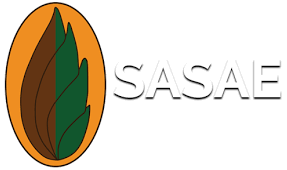Impact of Two Grazing Strategies on Rangeland Basal Cover and Beef Production in the Sourish Mixed Bushveld
DOI:
https://doi.org/10.17159/2413-3221/2023/v51n4a11778Keywords:
Rotational Grazing, Calving PercentageAbstract
The sustainability of beef cattle producers in South Africa is greatly dependent on the availability of natural resources. The aim of the study was first to evaluate the effect of two different strategies in the utilisation of rangeland over four years (2011/12 – 2014/15) on the basal cover—secondly, the study compared animal production results from the two extensively managed rotational grazing strategies. Grazing strategies include a traditional rotational system (TRG), where approximately 60% of fodder was utilised, compared with light selective grazing (LSG), where about 30% of fodder was used. Basal cover for TRG ranged from 19% (2011/12) to 15% (2014/15) and for LSG from 18% (2011/12) to 16% (2014/15). The calving percentage varied between 62% and 73%. The calving percentage and cow and calf weight did not differ between the two grazing strategies, although differences between years were observed. Both grazing systems can be implemented successfully in the Sourish Mixed Bushveld without negatively affecting the rangeland. However, basal cover may be more vulnerable during drought conditions under a TRG system. The study further indicates that mainly small-scale farmers, where utilisation levels of rangelands are usually high, are more vulnerable to drought conditions.
Downloads
References
ACOCKS, J.P.H.., 1988. Veld types of South Africa: Memoirs of the botanical survey of South Africa. South Africa: National Botanical Institute.
AGROCLIMATOLOGY STAFF., 2015. ARC-ISCW Climate information system. Pretoria, South Africa: ARC-Institute for Soil, Climate and Water.
COULLOUDON, B., ESHELMAN, K., GIANOLA, J., HABICH, N. & HUGHES, L., 1999. Sampling vegetation attributes: Interagency technical reference. Denver, Colorado, USA: Bureau of Land Management, National Applied Resource Sciences Centre.
DEPARTMENT OF AGRICULTURE, FORESTRY AND FISHERIES (DAFF)., 2012. Abstract of Agricultural Statistics 2012. Pretoria, South Africa: Directorate Statistics and Economic Analysis, Department of Agriculture, Forestry and Fisheries. Resource Centre, Directorate: Communication Services.
DEUTSCHER, G.H., 1991. G85-741 Estrous synchronization for beef cattle. University of Bebraska-Lincoln.
EVANS, R.A. & LOVE, R.M., 1957. The step-point method of sampling: A practical tool in range research. J. Range Manage., 10: 208–212.
GLASS, G.V., PECKHAM, P.D. & SANDERS, J.R., 1972. Consequences of failure to meet assumption underlying the fixed effects analyses of variance and covariance. Rev. Educ. Res., 42: 237-288.
GROBLER, S.M., 2016. Alternative management systems to increase beef production under extensive conditions. Doctoral thesis, University of the Free State, South Africa.
GROBLER, S.M., SCHOLTZ, M.M., NESER, F.W.C., GREYLING, J.P.C. & MOREY, L., 2019. Effect of controlled breeding on performance of beef cattle in the Central Bushveld bioregion. S. Afr. J. Anim. Sci., 49(6): 1013-1020.
JACOBO, E.J., RODRIGUES, A.M., BARTOLONI, N. & DEREGIBUS, V.A., 2006. Rotational grazing effects on rangeland vegetation at a farm scale. Rangel. Ecol. Manag., 59(3): 249-257.
JOHN, J.A. & QUENOUILLE, M.H., 1977. Experiments: Design and analysis. Rangel. Ecol. Manag., 59: 249-257.
LOW, A.B. & REBELO, A.G., 1996. Vegetation of South Africa, Lesotho and Swaziland. Pretoria, South Africa: Department Environmental Affairs and Tourism.
MEAKER, H.J., 1984. Effective extensive beef production as a prelude to feedlotting. S. Afr. J. Anim. Sci., 14(4): 158-163.
MEISSNER, H.H., SCHOLTZ, M.M. & PALMER, A.R., 2013. Sustainability of the South African livestock sector towards 2050. Part 1: Worth and impact of the sector. S. Afr. J. Anim. Sci., 43 (3): 282-297.
MUCINA, L. & RUTHERFORD, M.C., 2006. The vegetation of South Africa, Lesotho and Swaziland. Strelitzia 19. Pretoria, South Africa: South African National Biodiversity Institute.
PANAGOS, M.D., 1995. A comparative classification of the Sourish-mixed Bushveld on the farm Roodeplaat (293 JR) using quadrat and point methods. Masters thesis, University of Natal, Pietermaritzburg.
PATTERSON, D.J., WOOD, S.L. & RANDLE, R.F., 2005. Procedures that support reproductive management of replacement beef heifers. University of Texas.
RMRD SA., 2012. Research and development plan for the large and small stock meat industries in South Africa, 2012–2013. Available from www.rmrdsa.co.za.
RUTHERFORD, M.C. & WESTFALL, R.H., 1994. Biomes of Southern Africa: An objective categorisation. 2nd edn. Botanical Research Institute.
SAS., 1999. Statistical Analysis Systems user’s guide. North Carolina, USA: SAS Institute.
SCHOLTZ, M.M. & BESTER, J., 2010. Off-take and production statistics in the different South African cattle sectors. Results of structured survey. Appl. Anim. Husb. Rural Develop., 3(1):19-33.
SHAPIRO, S.S. & WILK, M.B., 1965. An Analysis of Variance Test for Normality (complete samples). Biometrika., 52: 591-611.
SPIES, D.C., 2011. Analysis and quantification of the South African red meat value chain. Doctoral thesis, University of the Free State, South Africa.
TROLLOPE, W.S.W., TROLLOPE, L.A. & BOSCH, O.J.H., 1990. Veld and pasture management terminology in southern Africa. J. Grassl. Soc. South. Afr., 7(1): 52-61.
THERON, H.E. & Scholtz, M.M., 1994. Genetic relationship between growth traits in Bonsmara heifer and bull calves on different nutritional regimes. S. Afr. J. Anim. Sci., 24(2): 67-70.
VAN DER WESTHUIZEN, H.C., 2003. Die gebruik van degradasiegradiënte vir weiveldevaluering in ‘n semi-ariede gebied. Doctoral thesis, University of the Orange Free State, Bloemfontein, South Africa.
VAN DER WESTHUIZEN, H.C., MOHLAPO, T.D., DE KLERK, J.D., MAJOLA, S.E., SNYMAN, H.A. & NESER, F.W.C., 2020. Reproduction performance of beef cattle before and after implementing a sustainable grazing system in a semi-arid grassland of Southern Africa. S. Afr. J. Agr. Ext., 48(1): 112-121.
VAN DER WESTHUIZEN, H.C. & SNYMAN, H.A., 2016. Bringing your veld back to life after drought. Farmers Weekly, 19 April 2016.
Downloads
Published
Issue
Section
License
Copyright (c) 2023 S.M. Grobler, H.C. Van der Westhuizen, H.A. Snyman, M.M. Scholtz, F.W.C. Neser, J.P.C Greyling, L. Morey, M. Trytsman

This work is licensed under a Creative Commons Attribution 4.0 International License.
How to Cite
Funding data
-
National Research Foundation
Grant numbers UID 83933 -
Red Meat Research and Development South Africa








.png)